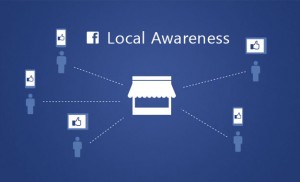— November 8, 2017

Building the right mix of incentives to maximize employee performance requires an organization to align interconnected aspects within the business in a way that easily communicates standards. As you probably know, that is far easier said than done. Are the metrics your organization uses hurting or providing help to your sales and marketing teams?
Contradictory incentives based on numbers such as revenue, earnings per share, operating income, and customer service scores can easily curb operations and make it difficult to build your bottom line. Further, employee performance is frequently undermined when the incentive plan or its metrics are not clearly understood.
Incentive Alignment
Management must ensure the company’s procedure for rewards and recognition are correctly aligned with its overall strategic and operational goals. If misaligned, the results can be extremely harmful to your business. While unanticipated actions and behaviors may be beneficial to some people, they can move your organization away from its long-term growth and revenue strategy.
The challenge is in finding and implementing an incentive program that motivates employees to commit to supporting your company’s operational objectives. A well-defined and designed performance measurement structure helps gauge employee understanding and buy-in for an incentive strategy.
Tips for Designing an Incentive Program That Works
Performance metrics are an important way for a company to communicate to its employees what is important. The truism “you get what you pay for” applies to incentives as well: if you’re measuring the wrong behaviors and actions, employees will do what you ask them to do and focus on those things.
Implementing the right sales incentives helps motivates your teams toward better performance. And not all incentives need to break the bank – many are subjective and rooted in employee job satisfaction. While incentive programs vary for different industry, successful ones meet the following criteria.
- Employee engagement. Your employees must buy in to your program and must believe it is fair and aligned with their abilities and efforts. This is why incentives based on profits don’t work for many employees; profits are an area that is outside their immediate control.
- Straightforward performance targets. Effective metrics must be relevant to each individual employee. Yes, an employee’s goals must be well-aligned with the goals of your organization, but they should also be fair and based on her or his role and tasks.
- Strike the right balance. Employees who feel overwhelmed become unfocused and their efforts are soon diluted. A good rule of thumb is to keep metrics to a minimum, say 3 to five. The higher the metric count, the more the risk of your incentive program losing its effectiveness.
Need some suggestions for incentives that boost motivation and your bottom line? Popular motivational tactics include:
- Paid time off after achieving a certain goal.
- A week or month’s access to a VIP parking spot.
- A top 25, 50, or 100 reward for calls, sales, or other goal.
- Lunch with the CEO.
- Spot awards that are randomly given for outstanding work.
The Bottom Line
People do what you pay them to do. When developing an incentive program, make sure you’re directing employee attention to the achievement of your organization’s overall strategic objectives.
To pay for itself through performance improvements, every incentive plan needs to drive better outcomes. Having the right metrics is part of the equation, but identifying the right goals and clearly communicating and implementing the plan will have a major impact on its success.
Business & Finance Articles on Business 2 Community
(69)








